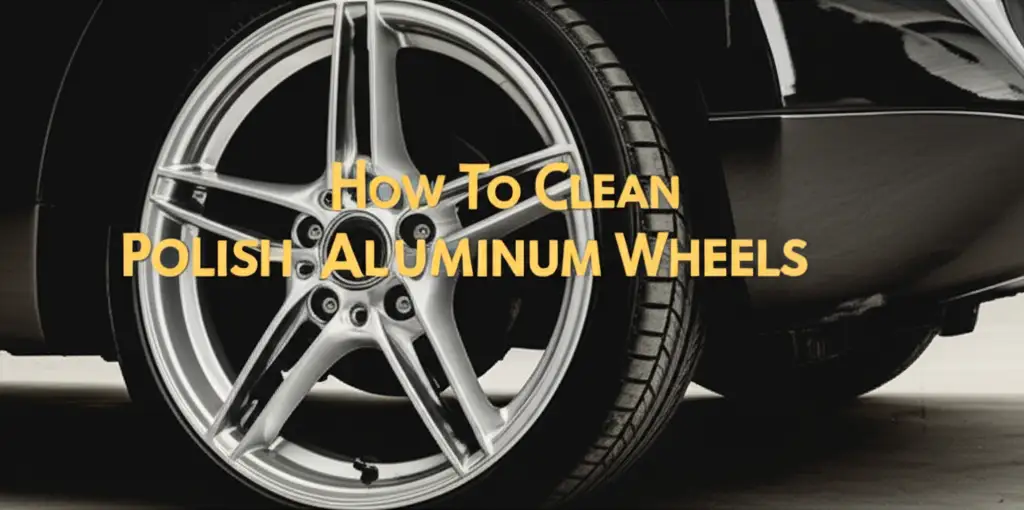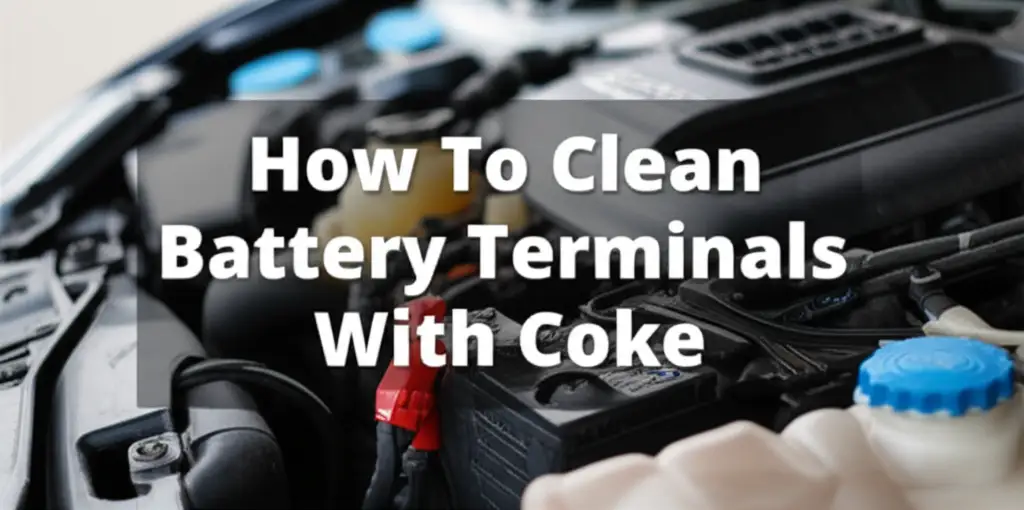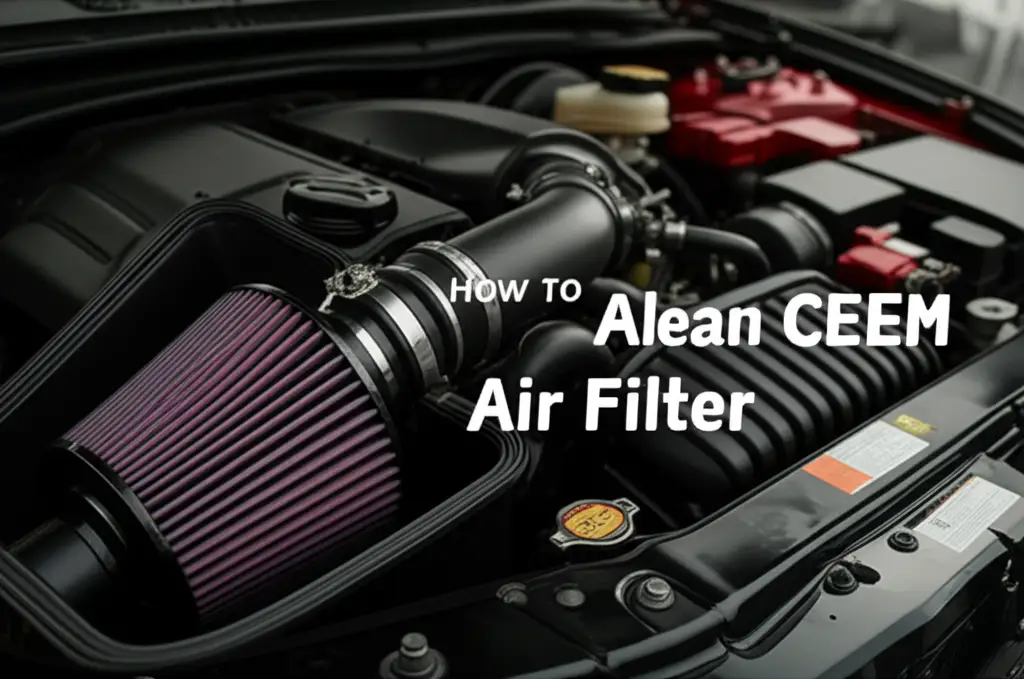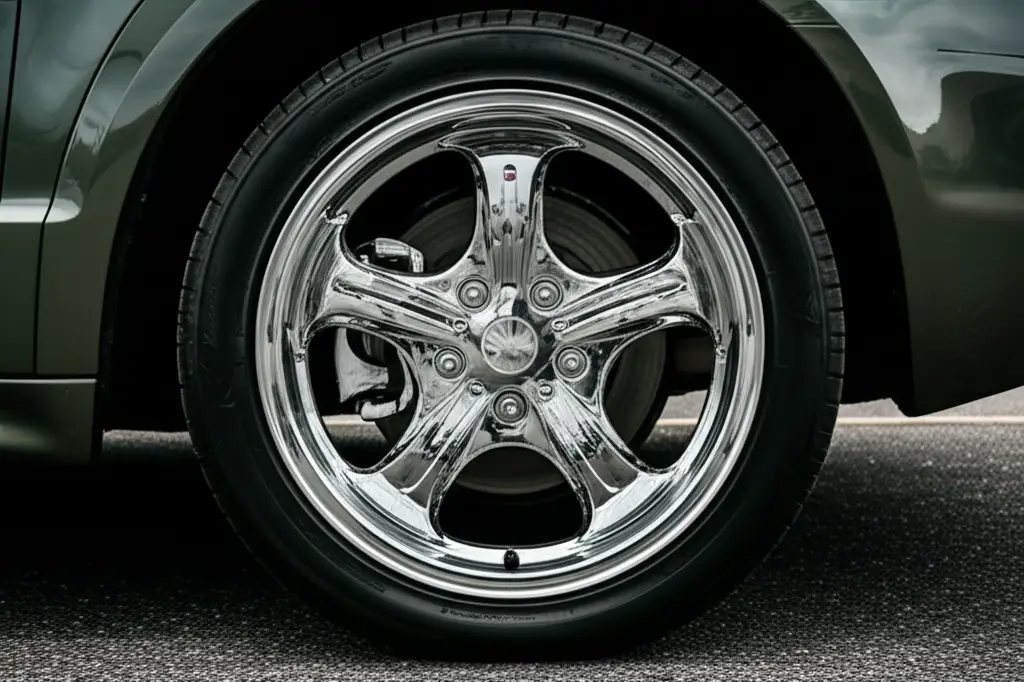· Automotive Care · 19 min read
How To Clean Sludge From Engine
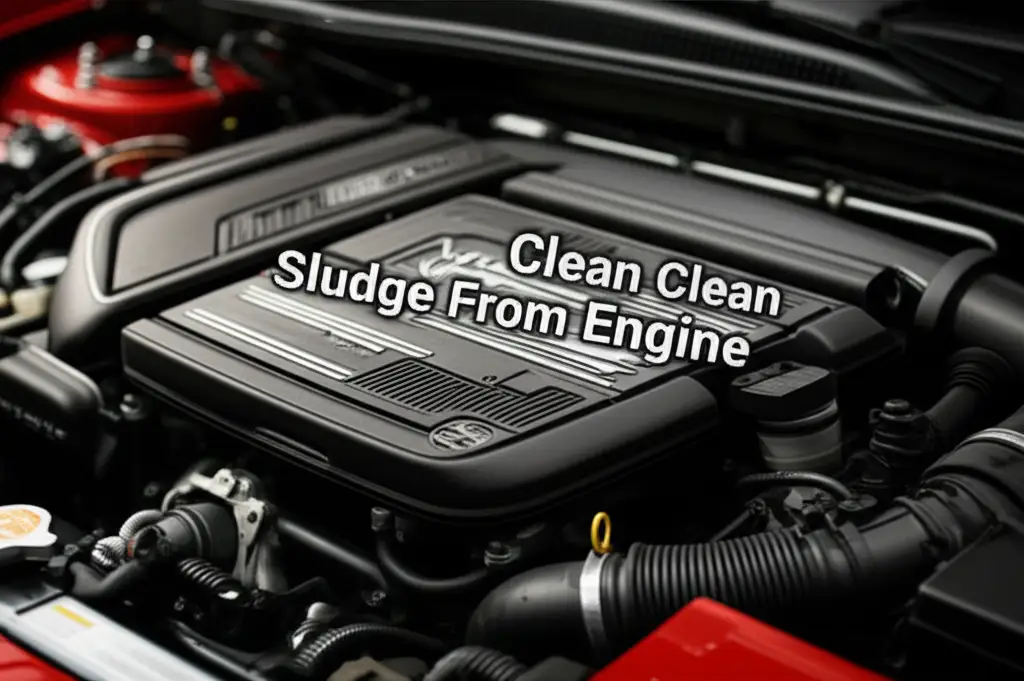
Cleaning Engine Sludge: A Guide for Car Owners
Ever heard a strange noise from your car engine? What if the problem is not a broken part, but something much simpler, yet more damaging? Engine sludge is a thick, dark goo that forms inside your engine. This buildup can destroy an engine from the inside. Knowing how to clean sludge from your engine is vital for any car owner. It helps your vehicle run well and lasts longer. This article explores what engine sludge is and how to remove it. We will also cover how to prevent it.
Takeaway
- Engine sludge hurts engine parts and stops proper lubrication.
- Signs of sludge include poor engine performance or oil light warnings.
- Engine flush products can dissolve light sludge buildup.
- For heavy sludge, manual cleaning of the oil pan and valve cover is best.
- Regular oil changes with the correct oil prevent sludge from forming.
Engine sludge is a thick, jelly-like substance that forms when oil breaks down. It blocks oil passages and coats engine parts. To clean sludge from an engine, you can use an engine flush product or manually clean components. Regular maintenance stops sludge from coming back.
Understanding Engine Sludge: Its Formation and Effects
Engine sludge is a sticky, black residue. It forms when engine oil breaks down due to heat and contamination. Oil normally lubricates moving parts. It also cools them and cleans them. Over time, heat and repeated use cause the oil to oxidize. This process forms carbon deposits and other harmful compounds. These compounds mix with dirt and moisture.
This mixture creates a thick, tar-like substance. This substance is engine sludge. It clings to engine parts like the oil pan, valve cover, and oil passages. Sludge acts like a blockage. It stops fresh oil from reaching all engine components.
The effects of engine sludge are serious. It restricts oil flow. This means critical parts do not get enough lubrication. Lack of lubrication leads to increased friction. Increased friction causes premature wear. This wear can damage bearings, camshafts, and lifters.
Engine performance goes down. Fuel efficiency also drops. In severe cases, the engine can seize completely. This leads to costly repairs or even engine replacement. Understanding sludge helps you act quickly.
Causes of Engine Sludge Formation
Several factors contribute to engine sludge. Knowing them helps you avoid the problem.
- Infrequent Oil Changes: This is the main reason for sludge. Engine oil has a lifespan. It breaks down and gets dirty over time. Skipping oil changes allows old, degraded oil to stay in the engine. It then turns into sludge.
- Using Incorrect Oil: Not all engine oils are the same. Your car needs a specific type of oil. Using oil with the wrong viscosity or specifications can lead to early breakdown. This breakdown creates sludge. Always check your car’s manual for the correct oil type.
- Short Trips: If you drive mostly short distances, your engine might not reach its full operating temperature. This prevents moisture and contaminants from evaporating out of the oil. They stay in the oil and speed up sludge formation.
- Poor Fuel Quality: Bad fuel can lead to incomplete combustion. This creates more byproducts that contaminate the engine oil. These contaminants contribute to sludge buildup.
- Engine Problems: Issues like a leaking head gasket can allow coolant to mix with the oil. This mix creates a thick, milky sludge. This type of sludge is often worse and needs immediate attention.
- High Temperatures: Engines naturally run hot. But extreme heat, perhaps from towing heavy loads or driving in hot climates, speeds up oil breakdown. This breakdown forms sludge faster.
Regularly checking your oil and following service schedules helps a lot. It keeps your engine clean. It also prevents sludge from ever becoming an issue.
Identifying Engine Sludge: Signs and Symptoms
Engine sludge often gives warning signs before causing major damage. Recognizing these signs early helps you act fast. Ignoring them can lead to expensive repairs. Your engine communicates problems in several ways. Pay close attention to these indicators.
One common sign is a lit oil pressure warning light. This light means oil pressure is low. Sludge can block oil passages. This blockage stops oil from flowing freely. Low oil pressure harms engine parts. It means they do not get enough lubrication. If this light comes on, stop driving your car safely and check the oil level. Do not continue driving if the light stays on.
Another sign is poor engine performance. You might notice your car feels sluggish. It may lack power during acceleration. Fuel economy also drops. Sludge makes the engine work harder. This extra work uses more fuel. It also reduces overall efficiency.
Unusual engine noises can also point to sludge. A knocking or ticking sound might come from the engine. This noise means parts are not getting enough lubrication. Metal parts rub against each other without enough oil cushioning them. These noises are a serious warning.
Dark, thick oil is a visual clue. When you check your dipstick, the oil should be amber or dark brown. If it looks like black tar or has solid chunks, it is likely full of sludge. This appearance means the oil is severely degraded. It cannot protect your engine properly.
Smoke from the exhaust, especially blue smoke, can also indicate sludge. Sludge can clog the PCV valve or other engine breathers. This blockage can cause oil to burn in the combustion chamber. Blue smoke means oil is burning.
Why Cleaning Engine Sludge is Crucial for Vehicle Health
Cleaning engine sludge is not just about making your car run better. It is about protecting a major investment. Your engine is the heart of your vehicle. Sludge acts like a slow poison. It affects every part of the engine’s health. Ignoring sludge can lead to a complete engine failure. This costs thousands of dollars to fix or replace.
Engine sludge stops proper lubrication. It coats moving parts and blocks oil passages. Without enough lubrication, metal parts grind together. This creates extreme friction and heat. This friction wears down critical components like camshafts, lifters, and bearings. It shortens their lifespan dramatically.
Sludge also reduces engine efficiency. A sludgy engine works harder to perform the same task. This extra work means higher fuel consumption. It also means less power. Cleaning the sludge restores proper oil flow. This helps the engine run smoothly. It also improves fuel economy.
Furthermore, sludge can cause overheating. Oil helps cool engine parts. When sludge blocks oil flow, heat builds up. Overheating can warp engine components. It can even crack the engine block or cylinder head. These repairs are very expensive.
Cleaning sludge helps prevent future issues. It removes contaminants that break down fresh oil faster. A clean engine means new oil stays cleaner longer. This extends the time between oil changes. It also ensures the oil performs its job well. This proactive step saves you money in the long run. It also keeps your car reliable.
Preparation Before Cleaning Engine Sludge
Before you begin the cleaning process, proper preparation is key. This step ensures safety and makes the cleaning job effective. Gather all necessary tools and products. Make sure you work in a safe area. This preparation saves time and prevents problems later on.
First, park your car on a level surface. Engage the parking brake. This prevents the car from moving while you work. Safety is always important. Ensure the engine is cool. Working on a hot engine can cause burns. Let it cool down for at least an hour or two.
Next, gather your tools and supplies. You will need:
- New Engine Oil: Choose the correct type and viscosity for your vehicle. Check your owner’s manual.
- New Oil Filter: A new filter is essential after flushing.
- Engine Flush Product: Select a reputable brand. Read the instructions carefully.
- Oil Drain Pan: A large pan to collect old oil.
- Wrench for Oil Drain Plug: Make sure it fits your specific car.
- Oil Filter Wrench: For removing the old oil filter.
- Funnel: For adding new oil without spills.
- Gloves and Safety Glasses: Protect your hands and eyes from oil and chemicals.
- Shop Rags or Paper Towels: For spills and cleanup.
- Jack and Jack Stands (if dropping oil pan): For safely lifting the vehicle.
Consider the disposal of old oil. Oil is a hazardous waste. Do not pour it down drains. Most auto parts stores or service centers accept used oil for recycling. Have a plan for this before you start.
Finally, read the instructions on your chosen engine flush product. Each product may have slightly different steps or recommended idle times. Understanding these instructions ensures you use the product correctly. Good preparation makes the cleaning process smooth and successful.
Step-by-Step Guide: Using an Engine Flush to Clean Sludge
Using an engine flush is often the first step to clean sludge from engine internals. This method is simpler than manual cleaning. It works well for light to moderate sludge buildup. Always follow the product’s instructions for the best results. I find this method very effective for general maintenance.
- Add Engine Flush to Old Oil: Start your engine and let it warm up to normal operating temperature. This helps the old oil flow better. Turn off the engine. Locate your engine’s oil fill cap. Pour the recommended amount of engine flush product into the engine through the oil fill cap. This additive mixes with your existing engine oil.
- Run the Engine: Replace the oil fill cap. Start your engine again. Let the engine idle for the time specified on the engine flush product’s label. This is usually between 10 to 15 minutes. During this time, the flush circulates with the oil. It works to dissolve and loosen the sludge. Do not drive the car during this process.
- Drain Old Oil and Flush Mixture: After the idling period, turn off the engine. Place your oil drain pan under the oil drain plug. Remove the drain plug with a wrench. Let all the old oil and flush mixture drain completely. This can take several minutes. Be careful, as the oil might still be warm. You may also notice the oil is darker and dirtier than usual. This means the flush is doing its job.
- Replace Oil Filter: While the oil drains, remove the old oil filter using an oil filter wrench. Ensure you have the new oil filter ready. Apply a thin layer of new engine oil to the rubber gasket of the new filter. This helps create a good seal. Screw on the new oil filter hand-tight, then give it an extra quarter turn with the wrench.
- Add New Engine Oil: Once the old oil has fully drained, reinstall the oil drain plug. Make sure it is tight but do not overtighten it. Use a funnel to add the correct amount of new, fresh engine oil to your engine. Refer to your car’s owner’s manual for the correct oil type and capacity.
- Check Oil Level and Start Engine: Replace the oil fill cap. Start the engine and let it run for a few minutes. Check for any leaks around the oil drain plug or oil filter. Turn off the engine. Wait a few minutes for the oil to settle. Check the oil level with the dipstick. Add more oil if needed.
After this process, your engine will have fresh oil and a new filter. This helps prevent carbon buildup in the engine. It also improves engine health. For more tips on internal engine cleaning, consider reading about how to clean carbon buildup in engine.
Advanced Sludge Removal: Dropping the Oil Pan and Valve Cover
For severe engine sludge, an engine flush alone may not be enough. Thick, baked-on sludge often requires manual removal. This involves dropping the oil pan and removing the valve cover. This process is more involved. It offers a direct way to clean critical engine areas. I have done this many times for older cars.
Manual Cleaning of the Oil Pan
The oil pan sits at the very bottom of the engine. It collects all the oil. Sludge often settles here.
- Drain the Oil: Begin by draining all the engine oil. Follow the steps mentioned for a standard oil change. Ensure the engine is cool.
- Lift the Vehicle Safely: Use a jack to lift the front of your car. Place jack stands under the frame rails for safety. Never work under a car supported only by a jack.
- Remove Oil Pan Bolts: Place a large drain pan underneath the oil pan again, as more oil may come out. Use a socket wrench to remove all the bolts holding the oil pan in place. Some bolts may be hard to reach. Be patient.
- Pry Off the Oil Pan: Once all bolts are out, the oil pan may still be stuck due to sealant. Gently pry it loose with a gasket scraper or a flat-blade screwdriver. Be careful not to damage the engine block or the pan itself. The pan will drop, releasing any remaining oil and sludge.
- Clean the Oil Pan: Scrape out all the sludge from inside the oil pan. Use a plastic scraper or stiff brush. You can also use a degreaser to help remove stubborn residue. Clean the mating surface of the oil pan thoroughly. It must be free of old gasket material and grime. This ensures a good seal later.
- Clean the Oil Pickup Screen: While the pan is off, inspect the oil pickup screen. This screen filters oil before it enters the oil pump. It can get clogged with sludge. Carefully clean any sludge from this screen. A clogged screen restricts oil flow to the engine. This can cause severe damage.
- Install New Gasket and Oil Pan: Apply a new gasket or RTV sealant to the clean mating surface of the oil pan. Carefully reattach the oil pan to the engine. Tighten the bolts evenly, following your vehicle’s torque specifications. Do not overtighten.
- Lower Vehicle and Refill Oil: Lower the vehicle off the jack stands. Refill the engine with new, fresh oil and a new oil filter. Start the engine, check for leaks, and verify the oil level.
Cleaning the Valve Cover
The valve cover sits on top of the engine, covering the valves and camshafts. Sludge can build up here, too.
- Remove Engine Covers: Disconnect any hoses or wires attached to the valve cover. Remove any plastic engine covers.
- Remove Valve Cover Bolts: Use a socket wrench to remove the bolts holding the valve cover.
- Lift Off the Valve Cover: Gently pry the valve cover loose if it’s stuck. Be careful not to bend it.
- Scrape and Clean: Once removed, you will likely see sludge coating the underside of the valve cover and engine components. Use a plastic scraper and shop rags to carefully remove the sludge. Be gentle around sensitive components like wiring and sensors. You can use a solvent or degreaser approved for engine parts to help loosen stubborn deposits. Avoid spraying too much into the engine itself.
- Clean Mating Surfaces: Clean the old gasket material from both the valve cover and the engine cylinder head. A clean surface is vital for a good seal.
- Install New Gasket and Valve Cover: Place a new valve cover gasket into its groove on the valve cover. Carefully position the valve cover back onto the cylinder head. Reinstall the bolts and tighten them to specification. Do not overtighten.
- Reconnect Components: Reattach all hoses, wires, and engine covers that you removed.
Manual cleaning provides a deep clean. It addresses sludge that flush products cannot reach. It is a more labor-intensive process. But it can save your engine from major damage. After any oil work, you may find yourself with engine oil spills on concrete. It’s a good idea to know how to tackle those too.
Maintaining Your Engine to Prevent Sludge Buildup
Preventing engine sludge is far easier and cheaper than cleaning it. Regular maintenance is your best defense. Simple habits keep your engine healthy. They help you avoid serious sludge problems. I always advise my friends to follow these tips.
The most important step is regular oil changes. Follow your car manufacturer’s recommended oil change interval. This interval is usually found in your owner’s manual. It is often every 5,000 to 7,500 miles. Driving conditions like frequent short trips or heavy towing might require more frequent changes. New oil has additives that fight sludge formation. Old oil loses these properties.
Always use the correct type of engine oil. Your car’s engine is designed for a specific oil viscosity and specification. Using the wrong oil can lead to faster breakdown. This speeds up sludge formation. Synthetic oils often offer better protection against sludge. They resist thermal breakdown more effectively than conventional oils.
Replace your oil filter with every oil change. The oil filter catches contaminants in the oil. A clogged filter cannot do its job. Dirty oil circulates. This leads to sludge. A fresh filter ensures proper filtration. It helps the oil stay clean.
Drive your car regularly on longer trips. Short drives do not allow the engine to reach full operating temperature. This means moisture and fuel contaminants do not evaporate from the oil. They stay in the oil and promote sludge. Longer drives burn off these unwanted elements.
Monitor your oil level regularly. Check your oil level at least once a month. Low oil levels can lead to increased oil breakdown. This promotes sludge. Topping up oil as needed prevents this issue.
Address engine problems promptly. Issues like coolant leaks or excessive blow-by can contaminate your oil. This accelerates sludge formation. Fixing these problems quickly protects your engine.
By following these maintenance practices, you can largely prevent sludge from forming. This keeps your engine running smoothly for years. It saves you money on major repairs. It also gives you peace of mind.
What If Sludge Damage Is Already Significant?
Sometimes, sludge buildup becomes too severe for simple cleaning methods. Extensive damage might already be present. In such cases, the cleaning process is more complex. It might even require professional help. Ignoring these serious issues will lead to full engine failure.
When sludge is very heavy, it can solidify in critical areas. These areas include the oil pump pickup screen, main bearings, and piston rings. An engine flush might only dislodge large chunks. These chunks can then block oil passages. This makes the problem worse. Manual cleaning becomes essential.
Even with manual cleaning, some damage might be permanent. For example, if sludge has caused the piston rings to stick, oil consumption will be high. This will also cause poor compression. The engine will run poorly. Worn bearings due to lack of lubrication cause knocking noises. These parts cannot be cleaned back to new condition. They require replacement.
If your engine shows signs of severe sludge damage:
- Persistent Low Oil Pressure: Even after an oil change, the oil pressure light stays on. This means a serious blockage.
- Loud Engine Noises: Constant knocking or ticking that does not go away. This indicates worn-out components.
- Excessive Oil Consumption: Your engine burns oil at an alarming rate.
- Blue Exhaust Smoke: Consistent blue smoke suggests oil is burning in the combustion chambers.
- Significant Performance Loss: The car struggles to accelerate or maintain speed.
In these situations, a complete engine overhaul might be necessary. This involves disassembling the engine. Each part is inspected, cleaned, or replaced. This includes replacing bearings, piston rings, and possibly camshafts. This is a costly procedure. It requires expert mechanics.
A used or remanufactured engine might be a more cost-effective solution. This is true if the cost of an overhaul exceeds the car’s value. It is important to get a professional diagnosis. A mechanic can assess the extent of the damage. They can advise you on the best course of action. This decision depends on your car’s age, value, and your budget. Addressing severe damage properly ensures your car’s future reliability.
FAQ Section
Q1: How often should I use an engine flush?
You should not use an engine flush too often. Use it only when you suspect sludge buildup. Or use it if your car has a history of neglected oil changes. For regular maintenance, a quality engine oil and timely changes are enough. Using flush products too often can sometimes loosen deposits that then clog oil passages.
Q2: Can engine sludge be completely removed?
Complete removal of all sludge is challenging. An engine flush removes much of the loose sludge. Manual cleaning removes more baked-on deposits. Some minor residual sludge might remain. Regular oil changes after cleaning help to keep the engine clean over time.
Q3: Is engine sludge covered by car warranty?
Usually, no. Engine sludge often results from a lack of proper maintenance, like infrequent oil changes. Car warranties typically do not cover damage caused by owner neglect. Always check your specific warranty terms.
Q4: What happens if I ignore engine sludge?
Ignoring engine sludge leads to severe problems. It reduces lubrication. This causes friction and wear on engine parts. Engine performance drops. Fuel economy worsens. Eventually, it can cause the engine to seize. This results in very expensive repairs or even needing a new engine.
Q5: How long does it take for sludge to form?
The time it takes for sludge to form varies. It depends on factors like driving habits, oil quality, and maintenance. In neglected engines, sludge can appear in as little as 10,000 to 20,000 miles if oil changes are skipped. With good care, an engine might never develop significant sludge.
Q6: Can synthetic oil prevent sludge better than conventional oil?
Yes, synthetic oils generally offer better protection against sludge. They have higher resistance to thermal breakdown and oxidation compared to conventional oils. This means they last longer and maintain their lubricating properties better. They form fewer deposits.
Conclusion
Cleaning sludge from your engine is a critical task for vehicle health. Engine sludge, a thick, harmful byproduct of degraded oil, can silently damage vital components. It leads to poor performance, increased wear, and eventual engine failure. Recognizing the signs early, like low oil pressure or unusual noises, helps you act quickly. Addressing sludge protects your engine and saves you from costly repairs.
You have learned about using engine flush products for lighter buildup. We also discussed manual cleaning methods, like dropping the oil pan and valve cover, for more severe cases. Remember, prevention is simpler and cheaper than a cure. Regular oil changes with the correct oil type, along with a good driving routine, will prevent most sludge issues. If you notice signs of sludge, do not delay. Taking action helps your engine run efficiently. It ensures your car lasts longer. A clean engine is a happy engine.
- Engine Maintenance
- Oil Sludge Removal
- Car Engine Cleaning
- Engine Flush

